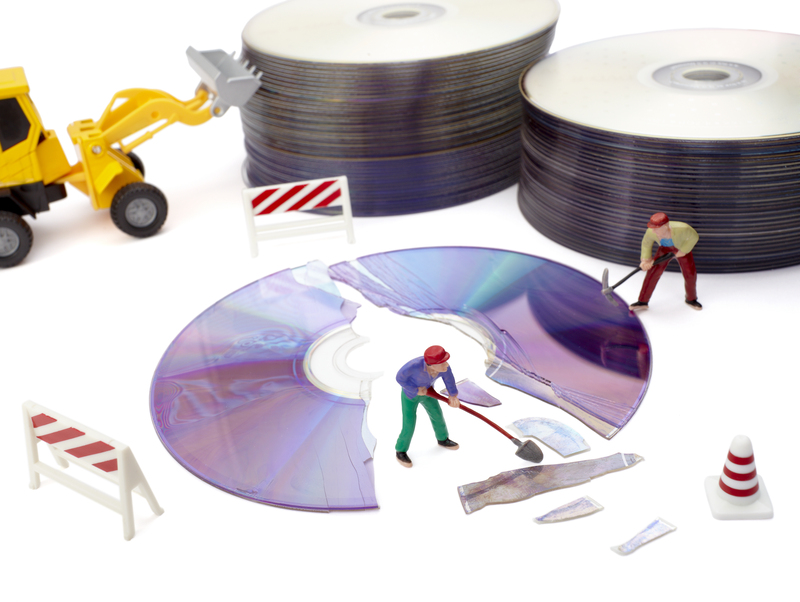Streamlined Spaces: De-clutter for Stress-Free Living
Unlock peace and productivity by mastering the art of de-cluttering. In today's fast-paced world, our homes and workspaces can quickly become overwhelmed by unnecessary items, leading to increased stress and reduced efficiency. Streamlined spaces are more than a design trend--they are a lifestyle choice that paves the way for stress-free living and a clear mind. This comprehensive guide delves into the benefits, methods, and transformative power of eliminating clutter, helping readers create harmonious, functional environments.
Why Does Clutter Cause Stress?
Research consistently reveals a strong connection between cluttered spaces and elevated stress levels. Excess possessions overload our senses, making it difficult to relax and focus. Clutter can trigger feelings of anxiety, embarrassment, and helplessness, often resulting in decreased productivity and overall happiness.
- Visual Overstimulation: Too many items in a room compete for our attention, leading to mental fatigue.
- Time Wasted: An unorganized space increases the time spent searching for things, causing frustration and lost opportunities.
- Reduced Comfort: A chaotic home environment makes it challenging to unwind after a long day, undermining relaxation efforts.
By streamlining your space, you reclaim your environment--and your mind--opening the door to a calmer, happier life.

The Benefits of Streamlined Spaces
Streamlined, clutter-free living has a ripple effect on nearly every aspect of your day-to-day existence. Transform your home, office, and mindset with these proven benefits of keeping spaces tidy:
- Improved Mental Health: A tidy home reduces anxiety and provides a sense of control.
- Enhanced Creativity and Productivity: Clearing out distractions creates mental space for innovation and focus.
- Better Sleep Quality: An organized bedroom promotes restful sleep by minimizing visual noise and chaos.
- Heightened Organization: Finding what you need becomes effortless, saving time and reducing frustration.
- Increased Motivation: A decluttered space is inspiring and energizing, encouraging further productivity.
- Safer Living: Removing obstacles decreases the risk of trips, falls, and fire hazards.
Streamlined spaces for stress-free living aren't just about aesthetics--they're a pathway to a healthier, happier you.
Common Sources of Clutter
Understanding where clutter originates is the first step toward a streamlined home or workspace. Here are the typical culprits that contribute to overwhelming spaces:
- Papers and Mail: Unsorted mail, bills, receipts, and magazines accumulate rapidly.
- Clothing: Old or unworn garments take up valuable closet space.
- Sentimental Items: Keepsakes and gifts, though meaningful, may pile up over time.
- Duplicate Items: Multiple kitchen gadgets, toiletries, or tools often go unnoticed.
- Outdated Electronics: Obsolete or broken devices linger in drawers and cabinets.
- Hobby Supplies: Crafting materials, sports gear, and project remnants fill shelves and corners if not managed.
- Children's Toys: Toys not regularly used can quickly overrun a child's room.
Identifying your most problematic clutter categories is essential for a customized de-cluttering approach.
How to Start the De-cluttering Process
Taking the first step toward streamlined, stress-free living may feel overwhelming, but breaking the process down into manageable parts makes it much easier. Here's a step-by-step guide to begin your journey:
1. Set Your Goals
Decide what you want to achieve--whether it's a single tidy room or an entire home overhaul. Write down your objectives and keep them visible to stay motivated.
2. Start Small
Don't try to tackle everything at once. Begin with a single drawer, shelf, or corner, then gradually expand your focus. Celebrating small victories will keep you energized throughout the process.
3. Sort Items by Category
Organize your belongings into distinct categories: keep, recycle, donate, discard, or relocate. This system makes it simpler to address every item objectively.
4. Ask the Right Questions
When sorting, evaluate each possession by asking:
- Do I use or love this item?
- Is this item functional or sentimental?
- Do I have duplicates?
- Would I buy this again today?
5. Create Designated Spaces
Assign a specific storage spot for everything you intend to keep. Label boxes, bins, and shelves, making it easy to return items to their places.
6. Dispose Responsibly
Donate gently used items to charities, recycle when possible, and discard only what cannot be reused. Responsible disposal minimizes waste and benefits your community.
De-cluttering Methods That Work
Numerous approaches can help you achieve a clutter-free sanctuary:
- KonMari Method(R): Made famous by Marie Kondo, this approach focuses on keeping only those items that spark joy and organizing possessions by category.
- Minimalist Challenge: Reduce belongings to only those most essential, aiming for simplicity in every aspect of life.
- Four-Box Technique: Use four boxes labeled 'keep,' 'donate,' 'sell,' and 'trash' as you sort through each area.
- Room-by-Room Approach: Tackle one area at a time for a less daunting experience.
- One-In, One-Out Rule: For every new item brought in, remove another to maintain balance.
Experiment with different methods to find what fits your lifestyle. Remember: streamlined spaces look different for everyone.
Tips to Maintain Your Streamlined Spaces
Once you've cleared out clutter, it's vital to keep it from creeping back in. Embrace these habits for long-term, stress-free living:
- Adopt Daily Routines: Spend a few minutes each day returning items to their proper places.
- Regularly Review Belongings: Schedule monthly or seasonal clean-outs.
- Be Mindful of New Purchases: Before buying, ask if the new item is truly necessary and where it will be stored.
- Maximize Storage Solutions: Invest in multi-functional furniture, hanging organizers, and shelving to make the most of your space.
- Limit Sentimental Storage: Choose a single container or shelf for keepsakes and reassess periodically.
- Establish Family Rules: Involve everyone in maintaining an ordered environment with clear house guidelines.
Room-by-Room De-cluttering
Each area of your home or workspace has unique decluttering challenges. Here's a targeted room-by-room guide to inspire your transformation:
Living Room
- Clear surfaces: Coffee tables, end tables, and shelves should only hold essentials or meaningful decor.
- Organize media: Keep entertainment consoles and bookcases tidy by donating unused books, DVDs, or games.
- Manage cords: Use cable organizers to reduce visual chaos from electronics.
Kitchen
- Edit gadgets: Remove duplicates and seldom-used appliances.
- Streamline pantry: Discard expired food and organize by category.
- Clear counters: Store only frequently used items within easy reach.
Bedroom
- Rotate clothing: Store out-of-season clothes elsewhere.
- Simplify bedding: Keep linens and pillows to a minimum for a restful feel.
- Tidy nightstands: Only keep items necessary for a good night's sleep.
Bathroom
- Limit products: Dispose of empty or expired toiletries and makeup.
- Organize cabinets: Utilize baskets or bins to group items by function.
Home Office
- Digitize paperwork: Scan important documents and recycle unnecessary paper.
- Label files: Use a clear filing system for easy document retrieval.
- Clear desktop: Keep only essentials and tools you use daily.
Garage and Storage Spaces
- Sort equipment: Dispose or donate tools and sports gear you no longer use.
- Use vertical storage: Install shelving for better organization and more floor space.
Emotional Barriers to De-cluttering
Letting go of possessions can bring up unexpected emotions, from nostalgia to guilt. Here's how to address common barriers when pursuing a streamlined lifestyle:
- Sentimental Attachment: Photograph cherished items you cannot keep, or restrict sentimental storage to a set amount of space.
- Fear of Future Need: Challenge yourself to donate or discard items unused for over a year--most will not be missed.
- Waste Aversion: Remember that donating or recycling helps others and the planet. Keeping unused items serves no one.
- Lack of Time: Set a timer for just 10-15 minutes a day, and gradually make progress. Consistency trumps intensity.
The Mental and Physical Health Connection
Streamlined spaces aren't just pleasing to the eye--they have profound benefits for physical and mental well-being. Studies link clean, organized environments to:
- Lower cortisol levels: Reducing clutter reduces the stress hormone that triggers anxiety.
- Improved immune function: Clean environments harbor fewer allergens and germs.
- Greater mindfulness: Less visual noise supports meditation and present-moment awareness.
- Increased motivation for healthy habits: An orderly kitchen, for example, makes it easier to prepare wholesome meals.
With so many upsides, it's clear that decluttering for stress-free living is an investment in overall health.
Transform Your Life with Streamlined, Stress-Free Spaces
Embarking on a journey toward streamlined spaces is not just about letting go of stuff--it's about making room for joy, focus, and well-being. By systematically removing clutter from your surroundings, you pave the way for improved mental clarity, efficiency, and happiness.
Remember: Start small, stay patient with yourself, and celebrate every step toward a more organized, peaceful home. Your efforts will pay off in every area of your life as you embrace the beauty and freedom of stress-free, streamlined living.

FAQs on De-cluttering and Streamlining Spaces
How often should I de-clutter?
Aim to reassess every part of your home at least once or twice a year. More frequent, smaller sessions (monthly or seasonally) make the process manageable and keep spaces consistently organized.
Is it possible to maintain a clutter-free space with children?
Yes! Get children involved with age-appropriate tasks, promote habits like returning toys to designated bins, and regularly donate or store outgrown items. Streamlined spaces benefit the entire family by reducing cleanup time and encouraging play.
How do I de-clutter sentimental items?
Limit yourself to a memory box or select a few cherished keepsakes. Take digital photos of items you want to remember but do not need to keep physically.
What if my partner or roommates aren't on board?
Start by streamlining your personal areas to set a positive example. Discuss the benefits and work together on shared spaces at a comfortable pace.
Can digital spaces be cluttered?
Absolutely! Regularly organize your desktop, email inbox, and photo library for virtual stress-free living. A tidy digital environment complements an organized physical space.
Final Thoughts: The Power of Decluttering for Stress-Free Living
Streamlining and de-cluttering is an ongoing journey--a continuous process of evaluating what you truly need, use, and love. By transforming your physical environment, you'll find lasting benefits that extend to every aspect of your life. Start today, and welcome the serenity, clarity, and joy that come from de-cluttered, streamlined living.
```